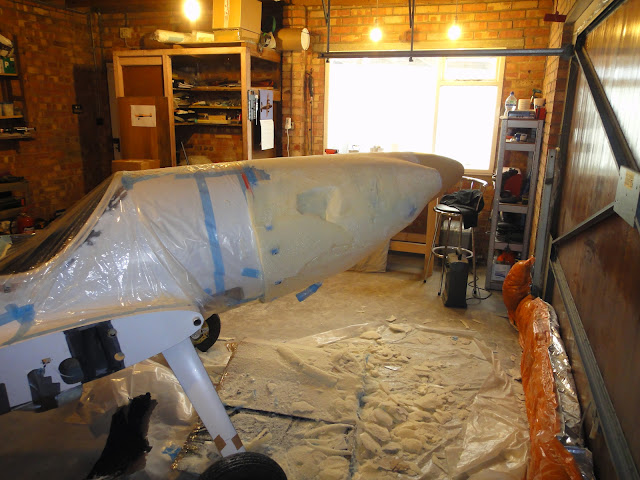Cracking on with the mold until I ran out of resin! Got some more on order but it may not get delivered for a few days.
I'm using the time to work on my motorbike.
So far I've got the gelcoat on and one layer of light weight chopped strand mat, followed by 2 layers of thick chopped strand mat.
Another 3 thick layers and it will be done.
All I have to do then is add some plywood supporting braces - which will be glued in place using the chopped strand mat and resin - and the top mold will be done.
 |
| PVA release when dry - shrinks to form a smooth surface. |
 |
| Gelcoat was clear so to make life easier when spotting mistakes a pigment was added - Tangerine of course! |
 |
| Agent Orange. Brushed on thick gelcoat that forms the inner surface of the mold. |
 |
| After 1 thin and 2 thick layers of chopped strand mat. Another 3 thick layers to go. |
 |
| Not a Twister! My Benelli Tornado 900. New stubby carbon muffler fitted - going to be very loud. |



















































